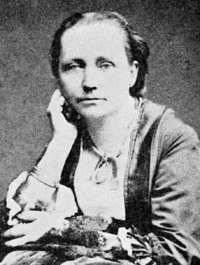
Charlotte Brame (or Braeme, depending on who you ask) is not a name most recognize. If I told you her pseudonym, Bertha M. Clay, you probably wouldn’t have much better luck. I only know who she is out of a serendipitous happenstance, after a trip to the Billy Ireland Cartoon Library and Museum last December, where Jen showed me some of her work that is housed in Ohio State’s collections. I knew I wanted to include her in my research. Unfortunately, despite being immensely prolific and popular, Brame’s work has largely been lost in the popular consciousness.
A “writer of mushy love stories for the English lower classes” (Northern Illinois University Libraries), Brame wrote 200 novels. Eleven of those are available for free public consumption on Project Gutenberg (all hail accessible information!). I read five of these novels in pretty quick succession over the course of a week, so at this point I feel pretty well-versed in Brame and all her literary quirks and trademarks. For instance, she was clearly a firm believer in the idea of the narrative foils. In most of the Brame novels I read, there were consistently two women. One blonde, made to suit men, described as fair, good, and kind. The other, a ‘dark’ and passionate beauty, someone fiery.
A Definitive Ranking of the Five Brame Novels I Read-
1. Love Works Wonders (4 / 5 stars) I loved this one, in no small amount because it was the one I found that fit in with my research. It splits the ‘enemies to lovers’ trope into two different relationships, but uses it pretty clearly!
2. Wife in Name Only (3.75 / 5 stars) Something that I really appreciated in Brame’s work was her continuous way of implying that men were easily enchanted and even easier misled. Too often in this period it is more about the woman of the story being naive or foolish and having her purity ripped from her. In this one, the woman has her good name ripped away, but the man’s life is fairly shaken up as well.
3. Dora Thorne (3.5 / 5 stars) A fairly classic Brame story and her most popular work, this is a multi-tiered narrative with women being set in opposition in beauty and manner, class getting in the way of love, and a family drama that carries through generations. (SPOILERS!) I felt badly for Lillian, Beatrice’s twin sister who is fair and unassuming, and thusly ignored by literally everyone. Also, at the very end, Charlotte threw in this shining nugget ; “Lillian Dacre never troubled her head about ‘women’s rights;’ she had no idea of trying to fill her husband’s place; if her opinion on voting was asked, the chances were that she would smile and say ‘Lionel manages all those matters’” (209). I talked to Jen about this and she mentioned that this was also a technique Anna Katharine Green used (an early American detective fiction novelist), trying to distance themselves from the New Woman and the suffrage movement.
4. My Mother’s Rival (3 / 5 stars) This one was pretty short, a little underdeveloped. If I told you anything about it, I’d ruin half the story.
5. A Mad Love (2.5 / 5 stars). A swing and a miss from our Charlotte. Here is where Brame shows as being more sexist than I would expect from her, even though her particular brand of sexism is a modern one. If you have spent any time reading fanfiction, or even some romance novels, you’ll be familiar with the ‘Not Like Other Girls’ trope. This is where the male love interest of the female lead (or sometimes the female lead herself) describes the female as being “not like other girls”, implying that they are in some way more special or simply better than other types of girls. Brame actually says this verbatim – “And then he owned to himself that she was not like other girls” (16) – which I found quite funny.
Go out and read some Brame! The link to her Project Gutenberg page is below.
SOURCES-